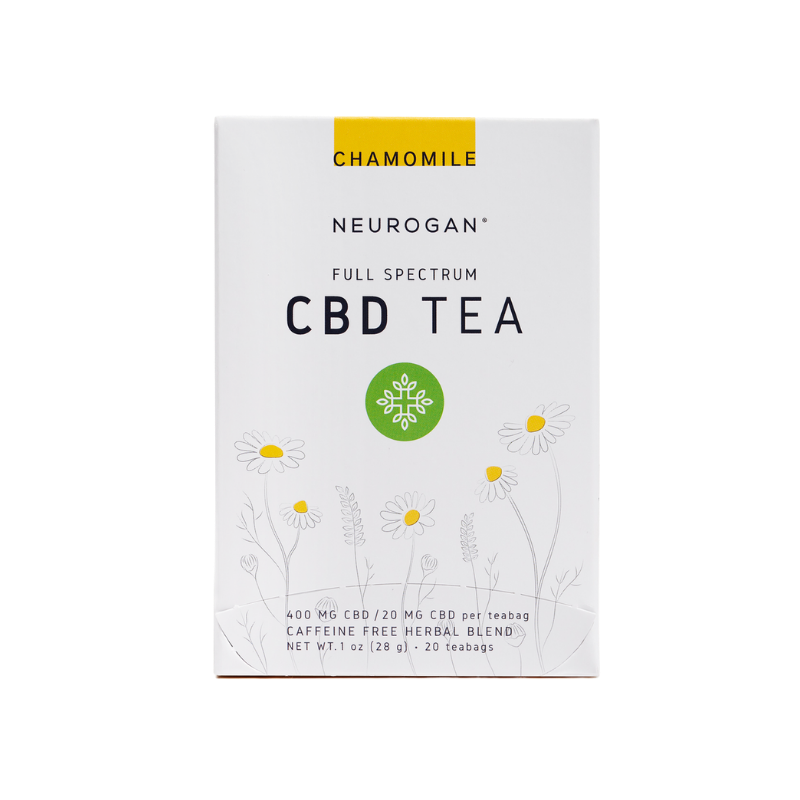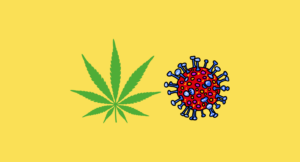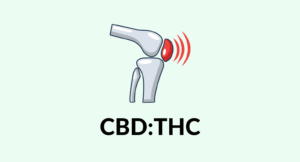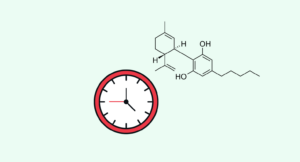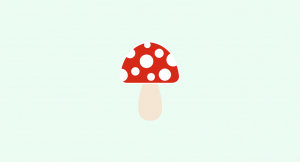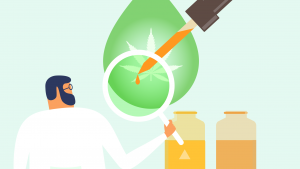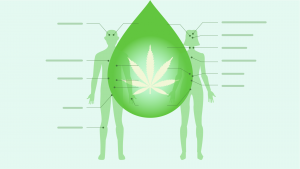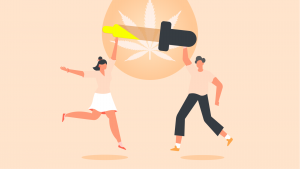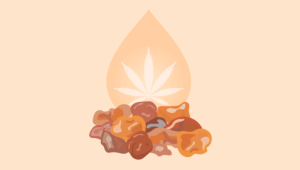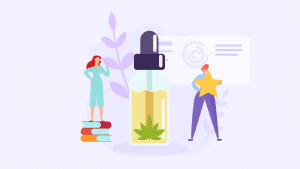Evidence based
How To Make Weed Stem Tea & Hemp Tea
Here’s what to do with all your old shake and weed stems.
There’s nothing worse than reaching into your weed supply and finding nothing but a pile of measly stems.
Whether you’re out of flower and still want to get high, or you simply don’t want to waste those stems, weed tea is a great way to put your stems to use and get the most out of your flower.
In this article, learn how to make weed tea, which offers a variable high depending on what kind of stems you use, how many stems you use, and several other factors.
We’ll cover everything you need to know to make a tasty, calming beverage out of your leftover stems.
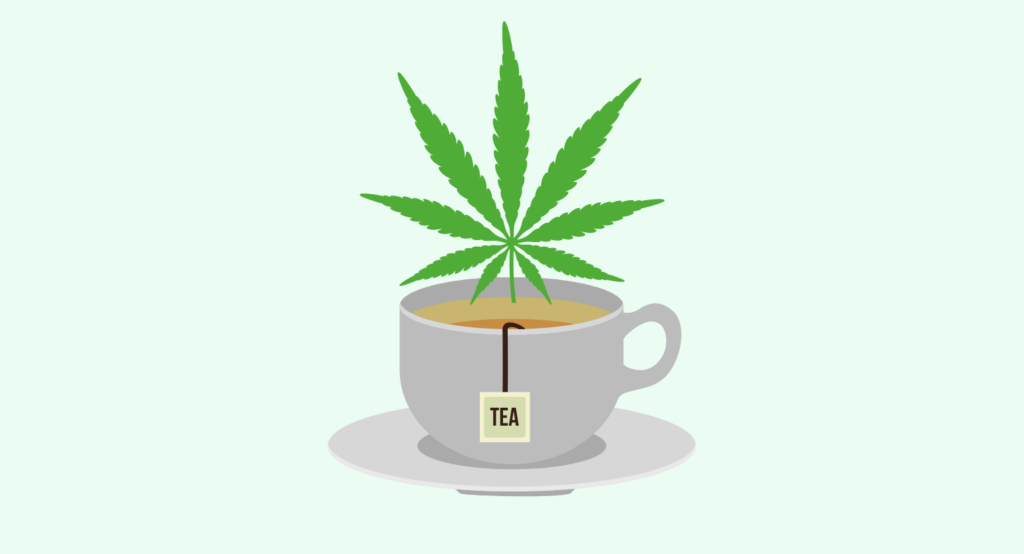
What Is Weed Stem Tea?
It’s important to know that when people refer to “weed tea,” they’re usually talking about a tea that’s made from the stem of the cannabis plant.
Weed stem tea is created by decarboxylating the stems and using them to infuse water like any other herbal tea.
It’s often brewed in conjunction with other herbs to reduce the harsh, bitter flavor of the stems. It’s also important to note that your weed stem tea will only be effective if you use a binding agent.
Because cannabinoids aren’t water-soluble, you’ll need a fatty or alcoholic liquid base to give the THC (tetrahydrocannabinol) something to grab onto. Since we’re talking about tea, milk of some sort is probably your best bet.
You can use dairy milk or any high-fat milk alternative such as coconut milk.
Weed stem tea is essentially equivalent to the experience of taking an edible, with variable potency and strength of the high depending on many factors. The quality of the stems, the strength of the flower, the binding agent used, and your personal tolerance level will all impact the high you get from weed stem tea.
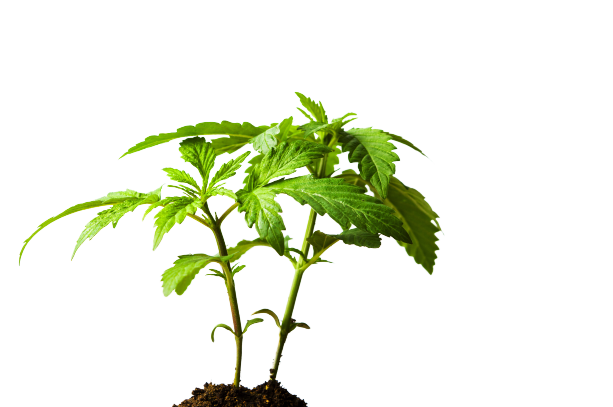
What Are Weed Stems?
Weed stems are what remains after you’ve pulled all the buds off of each nug, so anyone who buys hemp flower or marijuana flower has access to stems. If you grow your own plants, you’ll have plenty of stems to use after harvesting.
If you’ve ever tried to smoke stems, you probably know that the payout is minimal and usually unpleasant. Stems burn super hot, so the smoking experience is harsh and could be harmful to your throat.
Despite the annoyance of finding stems in flowers, you paid good money for, there are actually plenty of uses for stems. They contain THC and CBD (cannabinol), depending on the type of cannabis plant they’re from, and are a great starting point for hash, tea, butter, topical creams, and more.
Especially if you have your own plant or buy the same strain repeatedly, it’s a good idea to gather up a lot of stems over time. Since there are fewer stems than bud, it’ll likely take more than one weed haul to cache up a gram or two of stems for weed tea.
Unlike bud, it’s okay to let your stems dry out, so you can just keep them in a normal container or plastic bag. Some people like to put their stems in a bag in the freezer to bounce any remaining keef off of the stems, but it’s unclear whether this would make the stems unusable for tea.
How Much THC Is In Weed Stems?
It’s generally accepted by users and growers that cannabis stems have less THC than flowers, but there isn’t much scientific research on exactly how much THC is in stems. You can usually expect a milder high from products made with stems.
Expect to use more stems than you would bud when making weed tea. If you would use one gram of bud for cannabutter, you might want to use two grams of stems for the same recipe. Keep in mind that the amount of THC in your stems is relative to the potency of the flower that came off of the stems.
How To Make Weed Stem Tea: Step-By-Step
This is a basic recipe that will teach you how to make weed stem tea. We can’t guarantee the potency or strength of your tea, so make sure to be aware of the strength of the plant your stems are from.
Here’s everything you need to make weed stem tea:
- At least one gram, and up to several ounces, of weed stems
- A binding agent with fat content, like cow’s milk or coconut milk
- An herb, tea, or citrus (optional)
- Water
- Oven
- Baking sheet
- Stovetop
- Pot with lid
- Strainer
- Thermometer (optional)
Step 1: Decarboxylate Your Stems
The process of decarboxylation is essentially what “activates” the THC in your stems. When you light weed in a pipe, cook it into ingredients to make edibles or heat it before adding it to a tincture, you’re decarboxylating the flower. This involves heating the flower to activate the cannabinoids.
Here’s how to decarboxylate weed stems:
- Preheat your oven to 240 degrees Fahrenheit.
- Place your stems — broken into small pieces or ground up using a grinder — on a baking sheet. The stems shouldn’t overlap or be too crowded.
- Bake the stems for around half an hour, taking them out when they look toasted.
- Let the stems cool.
Step 2: Infuse Your Tea
To infuse your tea, you’ll need to add a binding agent to the water. You can also make weed milk to add to normal tea later, but this is the method for true weed stem tea:
- Add one cup of water per cup of tea to your pot.
- Add about two tablespoons of your binding agent to the pot for each cup of tea. If you’re making three cups of tea, you’d add six tablespoons of milk, for example.
- Boil the mixture.
- Once the mixture is boiling, add your decarboxylated stems.
- Boil for about ten minutes, stirring gently throughout.
- Remove the pot from heat and strain.
Step 3: Make a Cup of Tea
Once you’ve made your infused water mixture, you can simply pour the infusion into a cup to enjoy.
You may notice that the flavor is nothing to write home about. This is the step where you can add flavors, like an herbal tea, a squeeze of lemon, or a bit of honey.
Enjoy while hot, or let it cool for a refreshing iced tea later on.
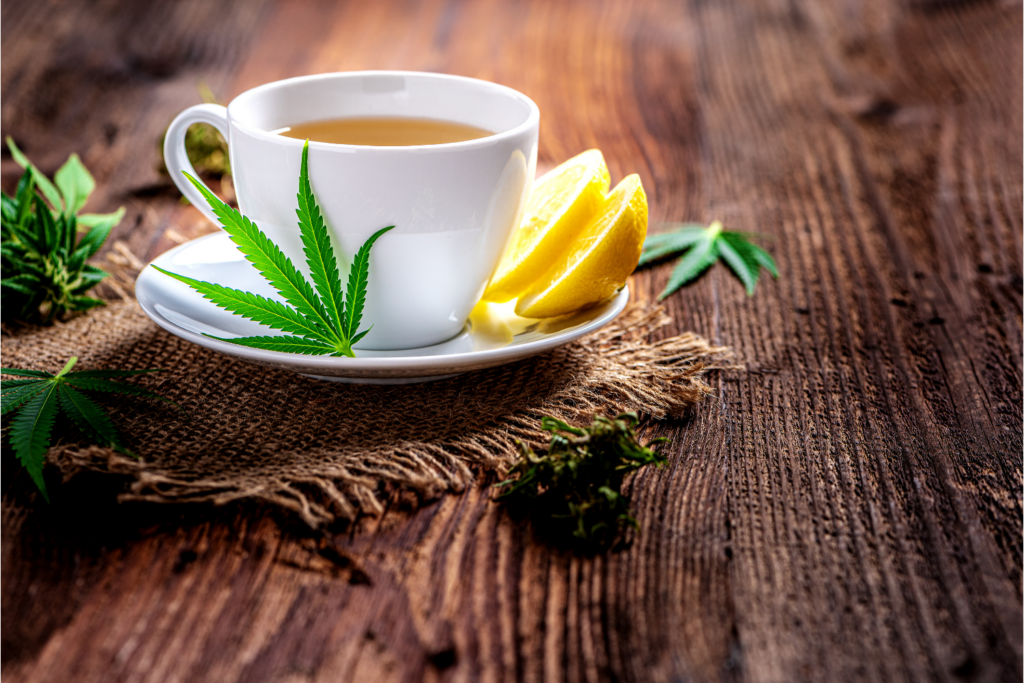
How to Make Weed Leaf Tea
The same process can be applied to weed leaves or hemp leaves.
The leaves of the weed plant contain very little THC and will therefore offer little in the way of psychoactive effects. Weed leaves and hemp leaves are both excellent sources of other useful compounds, including CBD. It’s a good source of antioxidants, minerals, and various other health-promoting phytochemicals.
With weed or marijuana leaves, the best method for making tea is to first dry the leaves on some paper towel, break them up into smaller pieces (like tea), and then simply infuse it in some hot (but not boiling water) for 5–15 minutes.
Just like the weed stem tea recipe, it helps to add a binding agent to help pull out the fat-soluble compounds from the leaves. Milk or MCT oil works great for this.
Buy Premade CBD Teas
You can also order premade hemp teas that come in the form of dried, flavored hemp leaves or teabags.
These products are non-psychoactive but are the easiest way to experience the many health benefits of CBD in the form of a tea. They’re almost always flavored with other herbs like chamomile, mint, bergamot, or green tea.
There are lots of excellent brands to choose from, but here are some of our favorites:
Final Thoughts: Weed Leaf & Hemp Teas
As you’re enjoying your homebrew, remember that the effects of weed stem tea — and any decarboxylated weed edible — can take up to two hours to set in.
Don’t rush to smoke a joint right after enjoying your cup of tea, especially if you aren’t sure of the potency just yet.
Start saving your stems now, and you’ll have a hot cup of relaxing tea before you know it.
